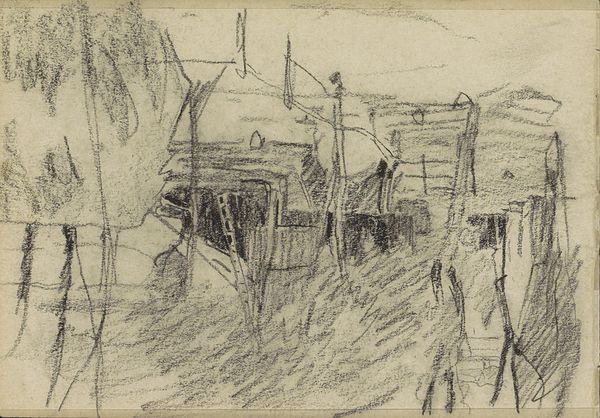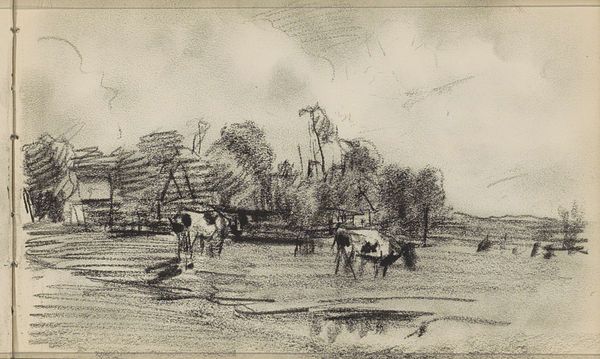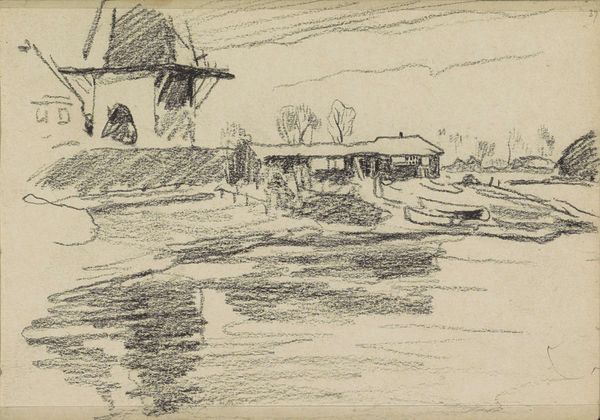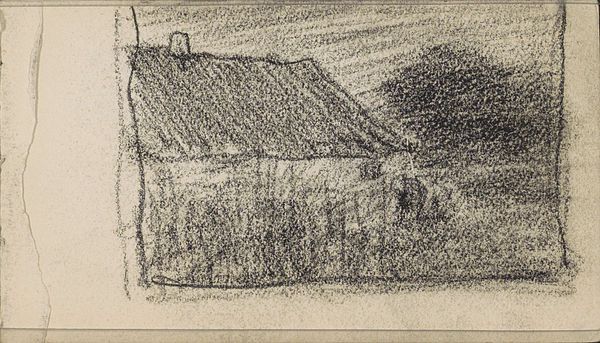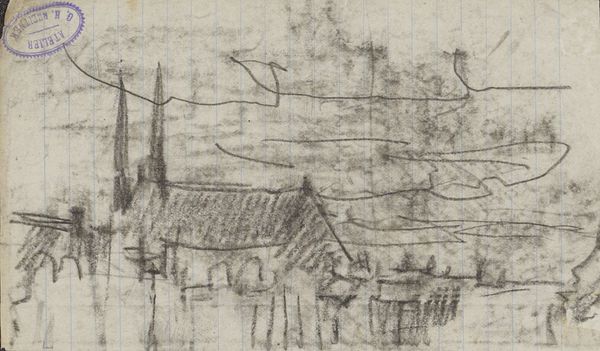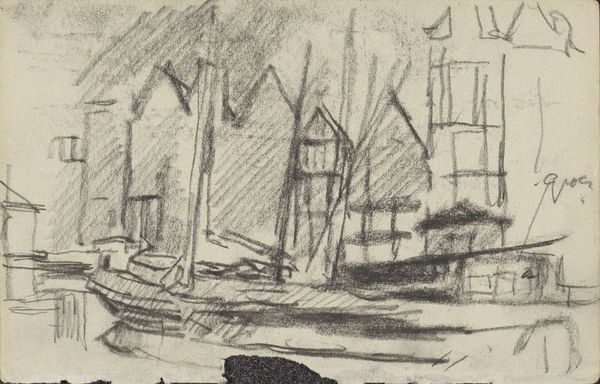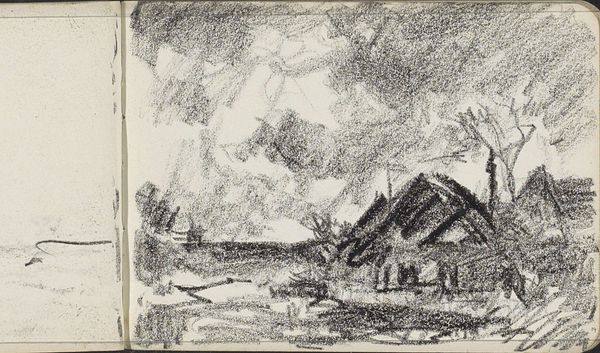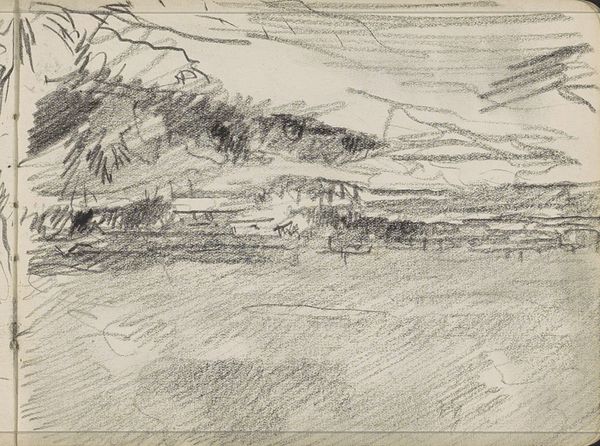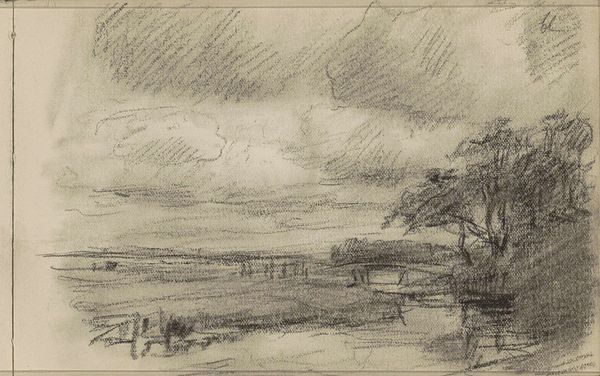
Copyright: Rijks Museum: Open Domain
Curator: This pencil sketch, titled "Landschap met bebouwing" – "Landscape with Buildings" – was created in 1909 by Johan Antonie de Jonge. Editor: There’s a striking starkness about it, isn't there? Despite the 'landscape' descriptor, the clustered buildings exude a sense of loneliness. It feels almost desolate. Curator: That starkness speaks to the broader shift in art at the time. Think of the rise of industrialisation and the attendant anxieties felt within communities dependent on agriculture, issues also explored through Millet's and Van Gogh’s images of peasant life. One could see that sense of disenfranchisement reflected here, in this depopulated view. Editor: I see that, but there's also something fundamentally unresolved, isn't there? Notice the incomplete figures, barely more than suggestive lines marking presence, labour, life, and perhaps the absence of all these. The lack of colour throws a focus onto the medium of a simple graphite, suggesting the work itself might be a study on a lower social order. Curator: Indeed, this period saw increased artistic engagement with social realism across Europe. How do you interpret that focus, particularly using the humble pencil? Is the intention a political declaration, a mere act of documentation, or a social mirror? Editor: All those aspects intertwine! The buildings, central to this community or household’s economy and history, appear faded, ghost-like in rendering; with a sense of history itself evaporating – certainly these sketches represent the concerns of marginalized populations and communities at this time. I sense resistance and an active response within such work. Curator: Perhaps De Jonge’s sketch makes us confront uncomfortable narratives, encouraging audiences to think about a world far beyond pretty landscapes, thus questioning our very existence. Editor: Absolutely. "Landschap met bebouwing," may appear a quiet landscape at first glance, yet, if you linger, you find a portrait of silent change, asking pertinent social questions about the time, echoing through ages.
Comments
No comments
Be the first to comment and join the conversation on the ultimate creative platform.
